OVERVIEW
Sections
- CITIES
- TOWNS
Map
Click on the icon ![]() in the top-right corner to view the map in full screen.
in the top-right corner to view the map in full screen.
The cities and towns are respectively in the 6th and 5th layers.
Show or hide the other layers as needed.
CITIES
| Name | Appeal | Pop | |
|---|---|---|---|
| 1 | Nice | ✦✦✦✦✦ | 350 000 |
| 2 | Monaco | ✦✦✦✦✧ | 40 000 |
| 3 | Antibes | ✦✦✦✦✧ | 75 000 |
| 4 | Cannes | ✦✦✦✧✧ | 75 000 |
| 5 | Toulon | ✦✦✧✧✧ | 180 000 |
⭐ Nice

Appeal ✦✦✦✦✦
Population 350 000
Nice, the capital of the Côte d’Azur and a true Mediterranean gem, blends urban elegance, southern charm, and rich culture like nowhere else. Listed as a UNESCO World Heritage site, the city is way more than just a quick stop, it’s one of the most iconic places on the Riviera thanks to its incredible light, its mix of architecture styles, and its cosmopolitan vibe.
The beating heart of Nice is its old town. It’s a maze of narrow streets, sometimes bustling, sometimes almost empty, where centuries-old palaces sit next to baroque churches and warm-colored façades, from golden yellow to red, all framed by those classic green shutters you see everywhere in Nice. The whole place gives off a lively, authentic feel, with a definite Italian touch in the air.
And then there’s the famous Promenade des Anglais, a long palm-lined walkway that follows the curve of the Bay of Angels. It’s the symbol of Belle Époque elegance, originally built for British visitors escaping the winter chill. Today, it’s full of people year-round, walkers, cyclists, joggers, and people just enjoying the view, under that signature Riviera blue sky.
Nice is a cultural powerhouse too. The city’s packed with world-class museums that celebrate the artists who fell in love with its light, Chagall, Matisse, and the masters of the École de Nice. Even the architecture tells a story, with layers of Sardinian roots, French influence, and bold modern touches.
The hills in Nice are another treat. The Castle Hill (Colline du Château) gives you one of the best panoramic views of the city, the port, and the sea. And there is the Cimiez neighborhood, where you’ll find Roman ruins and an ancient arena, plus a beautiful monastery and peaceful gardens.
Despite all its elegance, Nice keeps a popular, down-to-earth side too. You’ll feel it in the buzzing neighborhoods, the open-air markets, the pebbly beaches, and the simple but delicious local food. Day or night, the city pulses with energy, a mix of Mediterranean ease, local pride, and a touch of party spirit.
Nice is a city of contrasts, historic and modern, refined and lively, tucked between the sea and the hills. A true southern capital that knows how to shine.
⭐ Monaco (Principality)
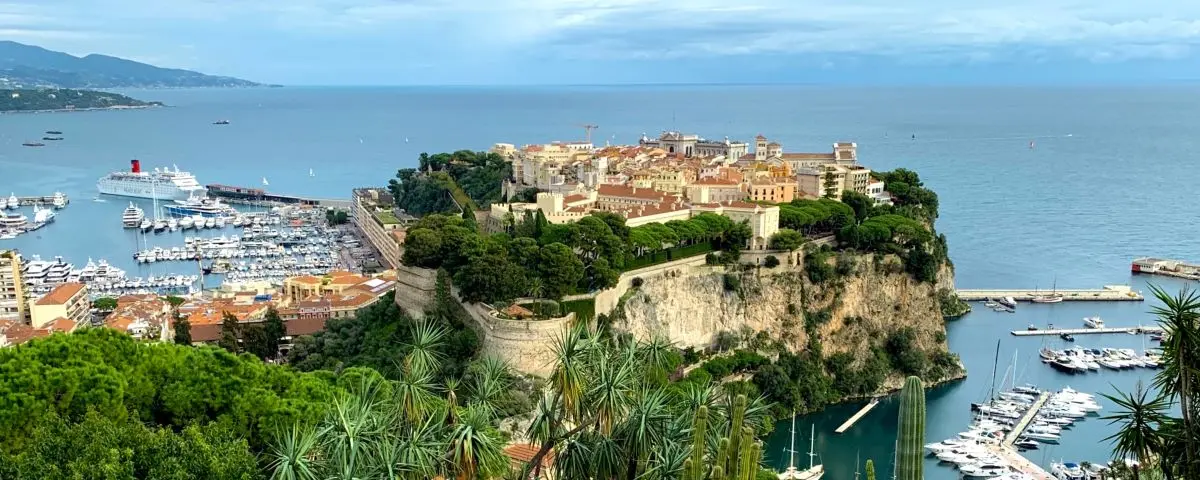
Appeal ✦✦✦✦✧
Population 40 000
Wedged between the sea and the mountains, the Principality of Monaco unfolds its one-of-a-kind setting across just two square kilometers, where bold urban design meets royal traditions. This tiny sovereign state packs in a whole world of its own, with glitz, culture, sport, and the Mediterranean all wrapped into one. It’s a must-see stop if you’re exploring the French Riviera.
Start with the Rock of Monaco, the historic heart of the city. That’s where you’ll find the Prince’s Palace, home of the Grimaldi family, which you can visit when it’s open to the public. Inside, you’ll walk through grand ceremonial rooms, and outside, the daily changing of the guard always draws a crowd. Just steps away, the narrow streets of old Monaco invite you to wander past colorful houses, tucked-away churches, and charming little squares that feel straight out of another era.
Clinging to the cliffs nearby is the Oceanographic Museum, founded by Prince Albert I. This sea-focused landmark, with its dramatic facade overlooking the waves, is home to a fantastic aquarium and a museum dedicated to marine exploration. It’s one of Monaco’s most iconic spots, just as striking for its architecture as for its exhibits.
Monaco’s full of contrasts, and the Monte-Carlo district shows that perfectly. It’s dominated by the legendary Casino, a Belle Époque palace full of marble and gold-leafed salons. All around it, luxury hotels, high-end boutiques, and sleek cars set the tone for a world that’s as refined as it is flashy. At night, the terraces and gaming rooms buzz with that classic Riviera glamour.
But Monaco isn’t just about luxury. The exotic gardens, hanging on the edge of the cliffs, offer a stunning walk high above the Mediterranean, and the harbor is perfect for a stroll among yachts and lively café terraces.
Monaco also hosts major international events year-round, from the legendary Formula 1 Grand Prix that roars through the streets every spring, to the renowned Monte-Carlo Ballet, the TV Festival, and concerts by the Philharmonic Orchestra. There’s always something big going on, whether it’s culture or sports.
Monaco is all about luxe living, but it also shows off serious cultural know-how and a growing commitment to the environment. It’s a tiny world, but one that’s full of life, unlike anywhere else on the Côte d’Azur.
Antibes
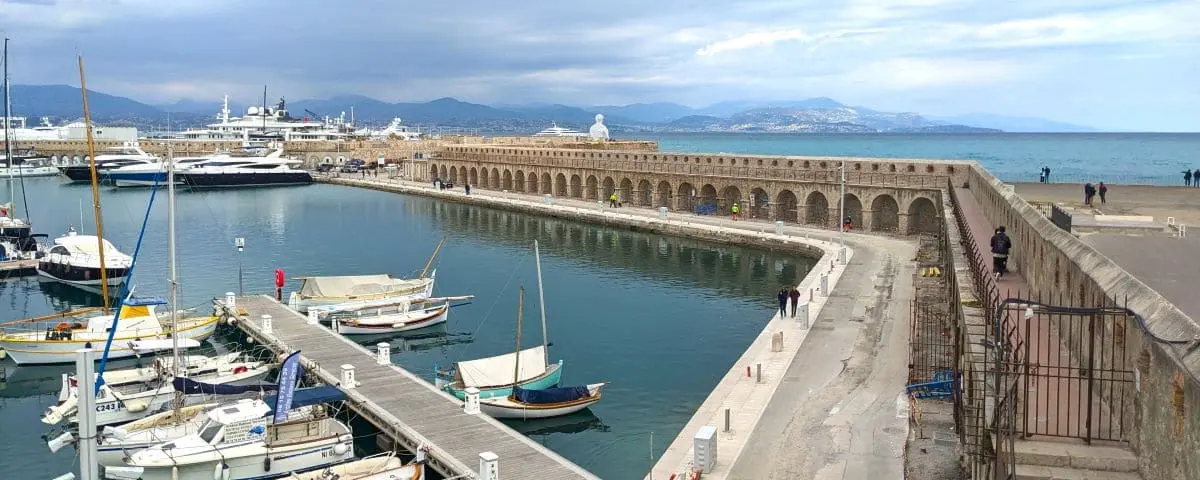
Appeal ✦✦✦✦✧
Population 75 000
Between Cannes and Nice, Antibes strikes the perfect balance between Provençal charm, artistic buzz, and seaside pleasures. This place has so many different faces, and it’ll win you over both with its historic roots and its lively cultural vibe.
The heart of Antibes beats in the old town, a maze of lively little streets lined with pastel houses and green shutters, dotted with cute little squares and old fountains. Wandering through this neighborhood, you’ll stumble upon a Provençal market full of fresh herbs and sun-soaked fruit, artisan shops, and cozy cafés with a laid-back local feel.
The ramparts of Antibes, some of the best preserved on the coast, remind you just how strategically important the city once was. Sitting high on a rocky outcrop, they offer a stunning walk with views of the Fort Carré fort, the Alps in the background, and the harbor below. These fortifications, especially reinforced in the 16th century, give Antibes its unique defensive look that’s still super visible today.
Between the old town and the ramparts, you’ll find Port Vauban, one of the biggest pleasure marinas in Europe. It’s seriously massive, welcoming everything from sailboats to mega yachts docked along the famous Billionaires’ Quay. The port is always buzzing with activity, but it’s also a great place to stroll around, with its jetty, shipyards, and café terraces.
One of Antibes’ cultural gems is the Picasso Museum, housed in the old Grimaldi Castle. When Picasso stayed there in 1946, he left behind loads of works full of color, joy, and playful energy. You’ll see various masterpieces, plus about fifty ceramics made in nearby Vallauris town. The whole place feels like a celebration of life, bathed in that special light that inspired Picasso so much.
And then there’s Juan-les-Pins, to the west of town, Antibes’ fun and festive beach resort, famous for jazz and that carefree Riviera vibe. Every summer, the Jazz à Juan festival draws musicians from all over the world, keeping alive a tradition that goes back to the 60s.
To the south, the Cap d’Antibes is perfect for peaceful walks between hidden little coves. The coastal path gives you an idyllic setting to explore Mediterranean plants and enjoy a stretch of coast that still feels untouched.
Antibes sits at the crossroads of art, history, and the sea, making it one of the must-see spots on the Côte d’Azur, just as charming off-season as it is in the middle of summer.
Cannes
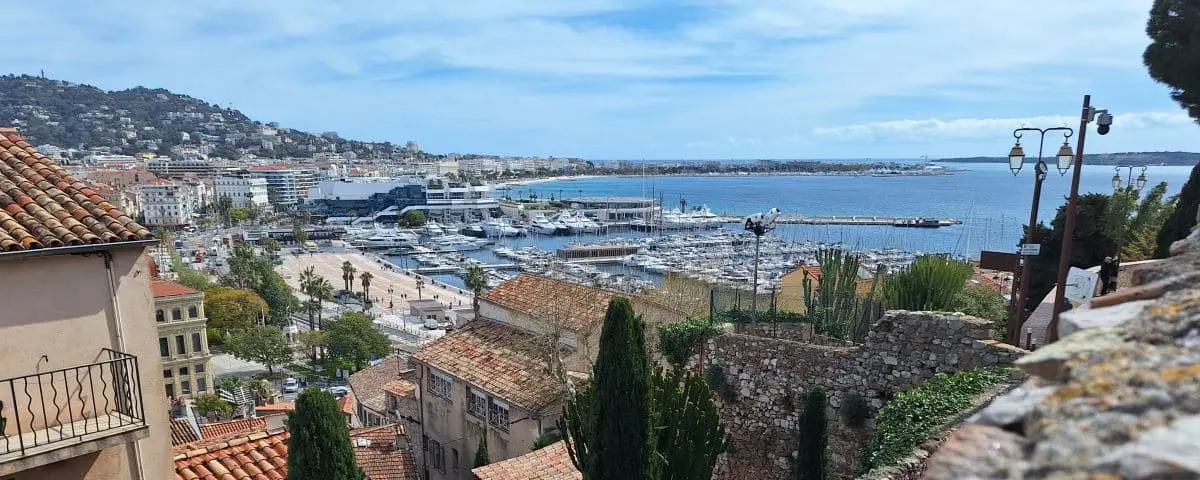
Appeal ✦✦✦✧✧
Population 75 000
Cannes is like the ultimate star of the French Riviera, with all the fancy hotels, private beaches and the glitter of the film festival. But if you look past the bling, there’s actually a deeper side to the city, a real Mediterranean vibe, and even a few spots away from the spotlight.
It’s hard to talk about Cannes without mentioning the legendary seafront La Croisette, lined with palm trees, luxury hotels and designer stores. That’s where the red carpet rolls out every May under a storm of camera flashes. But outside of festival season, it’s just a chill place to walk, jog or hang out with your family, with the beach and the sea right next to you.
Up on the hill, you’ve got Le Suquet, the old part of Cannes, and it’s a whole different world compared to the glitz of the big hotels. It’s this maze of little medieval streets, old houses, stone stairs and cozy restaurants. At the top, there’s the Notre-Dame-d’Espérance church, watching over the bay, and the view from up there is just stunning: you can see the whole city and the islands of Saint-Marguerite and Saint-Honorat. It’s the perfect spot to get a taste of the real Cannes.
Cannes is all about movies, but there’s more to it than just the red carpet. The Musée de la Castre, inside an old castle, has all kinds of cool stuff like tribal art, instruments from all over the world, and a tower with an epic view. And if you’re into street art, there’s this whole trail around the city with murals and trompe-l’oeil portraits of movie stars, it shows how Cannes is also trying to stay connected to pop culture today.
Beyond the clichés, what really makes Cannes special is the lifestyle. You’ve got Provençal markets, the one at Forville is a must, lively cafés, cute little shopping streets downtown, and beaches that are super chill once summer slows down. And all of that under this crazy blue sky that’s been inspiring artists and dreamers for over a century.
Toulon
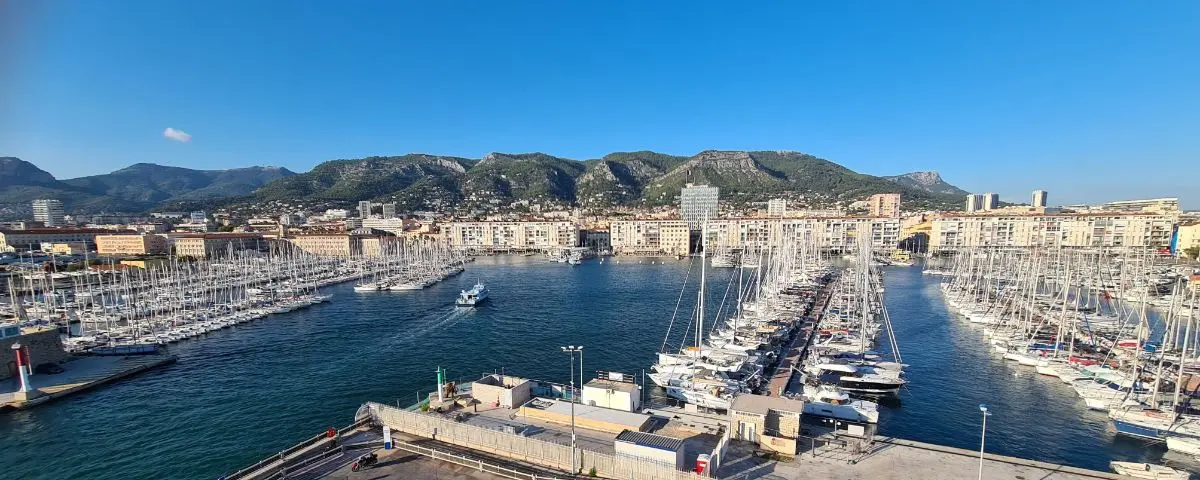
Appeal ✦✦✧✧✧
Population 180 000
Tucked between the sea and the mountains, Toulon’s got this mix that really pulls you in: a huge harbor, an old town that’s getting a fresh look, a deep naval history, and a cultural energy you wouldn’t expect. Way beyond the cliché of a military or shipyard town, Toulon opens up if you take the time to really explore it.
The harbor alone is worth the trip. From the top of Mont Faron, which you can reach by cable car, you get this amazing view over the city, the sea and the hills all around. It’s also the biggest military port in France, where navy ships, ferries and little boat-buses all share the space.
The city center, which used to have a rough reputation, is seriously changing for the better. The Arts District is coming to life with galleries, indie bookshops, cafés and local stores. Every morning, the Cours Lafayette market brings a burst of color and accents, full of energy. And over at Place Puget, you can chill in the shade of the plane trees.
Toulon’s packed with history, mixing baroque churches, old military defenses and stories from the people who’ve lived there. You can check out the National Navy Museum, the local history museum, or the photography house. The arsenal, the forts, the cathedral, and the opera, all remind you that Toulon was right at the heart of French naval history. And Napoleon made a name for himself here in 1793 when he took the city back from the British.
If you head east from downtown, the Mourillon district gives you more of a beachy feel: family-friendly beaches, little ports, and hidden villas. It’s got a real neighborhood feel, with markets, cafés and small shops, all wrapped up in that laid-back holiday vibe year-round.
Toulon’s one of those places people overlook, but it’s full of surprises. With its rich history and creative spirit, it’s so much more than just a military port. Definitely a place worth discovering, or rediscovering.
TOWNS
| Name | Appeal | Pop | |
|---|---|---|---|
| 1 | Menton | ✦✦✦✦✦ | 30 000 |
| 2 | Grasse | ✦✦✦✦✧ | 50 000 |
| 3 | St-Tropez | ✦✦✦✦✧ | 4 000 |
| 4 | Villefranche-sur-Mer | ✦✦✦✧✧ | 5 000 |
| 5 | Vence | ✦✦✦✧✧ | 20 000 |
| 6 | Fréjus | ✦✦✦✧✧ | 60 000 |
| 7 | Hyères | ✦✦✦✧✧ | 55 000 |
| 8 | Sanary-sur-Mer | ✦✦✦✧✧ | 18 000 |
⭐ Menton
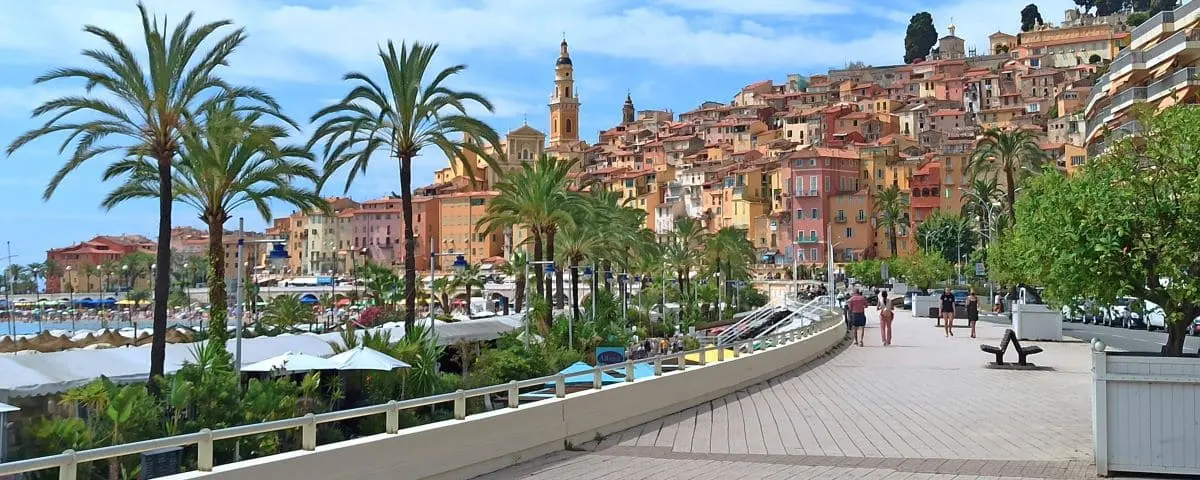
Appeal ✦✦✦✦✦
Population 30 000
Nicknamed “the pearl of the Côte d’Azur,” Menton charms you with its lovely old-school vibe, its Italian-style colors, and a climate that’s incredibly mild. Tucked away at the far eastern edge of the French Riviera, right near the Italian border, this holiday town has managed to keep its authenticity and elegance while standing out with its own unique character.
The best way to start exploring Menton is along the seafront named Bonaparte quay. From there, you get that picture-perfect view of the old town clinging to the hillside, with its pastel façades, bell tower, and little stair-stepped alleys leading down to the water. It sets the tone right away, Menton is like something out of a postcard, calm and full of light.
You’ve absolutely got to lose yourself in the maze of old town streets. The tightly packed houses and narrow alleys create this almost meditative vibe. All paths lead up to the gorgeous square in front of the Basilica of Saint-Michel-Archange, a baroque masterpiece with a stunning facade that opens onto a stone-paved square with an incredible view. Twisting stairways, archways, and flower-filled corners make the place feel frozen in time.
Menton is also famous for its Lemon Festival, which lights up the town every February. During that time, the city gets decked out in citrus: parades, exhibitions, and giant sculptures made entirely from lemons and oranges. It’s a colorful tradition that celebrates a fruit that’s become a local symbol.
Besides its architecture and cultural life, Menton is known for its beautiful gardens and parks. These lush spaces, full of tropical plants, reflect the history of wealthy 19th-century families who came here to enjoy the sunshine. Thanks to its unique microclimate, lemon trees, orange trees, and palms thrive here all year round.
What makes Menton extra special is its laid-back lifestyle, a mix of Italian dolce vita and Provençal gentleness. You can taste dishes with a Mediterranean twist, wander through scented markets, and soak up a golden light that’s inspired painters and writers alike.
With its charming old streets, dreamy gardens, and distinct personality, Menton is one of the Côte d’Azur’s best-kept secrets, a town to savor slowly, no matter the season.
Grasse
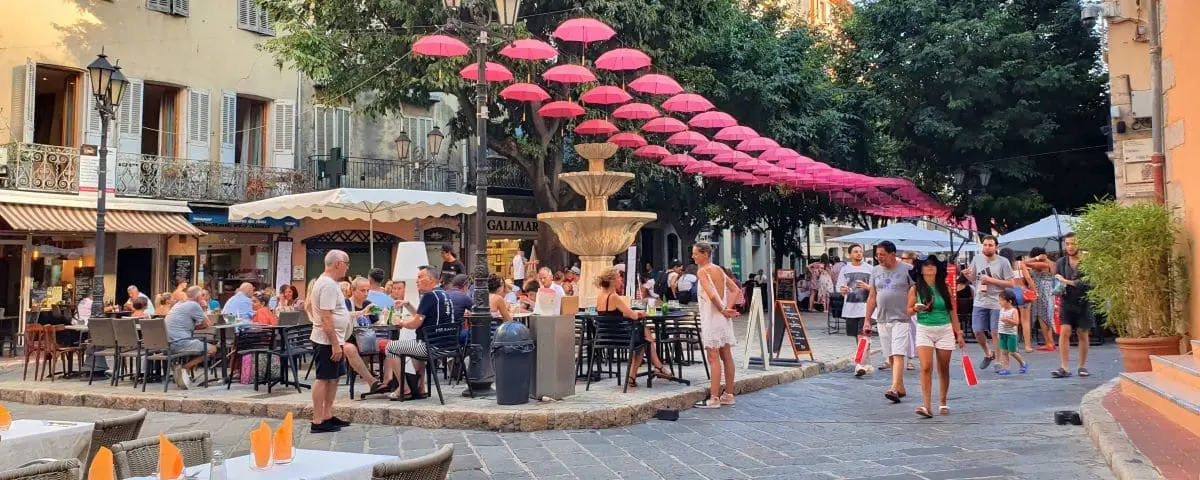
Appeal ✦✦✦✦✧
Population 50 000
Grasse, the world’s perfume capital, is one of the iconic towns of the Côte d’Azur backcountry, perched on the first hills behind Cannes. It’s more than just a town, it really embodies the Provençal way of life, full of history, colors, and of course, amazing scents.
The old town of Grasse is totally charming, with its maze of narrow streets lined with warm-toned medieval buildings. It’s the kind of place where you’ll happily get lost in the shade, passing under arches, through little sun-dappled squares, and past colorful shutters. The whole setting has a mix of Italian flair and Provençal soul, especially in the 17th- and 18th-century architecture.
Grasse became world-famous in the 18th century when glove makers started shifting away from leather and moved toward extracting floral essences and making perfume. From then on, the town turned into the beating heart of this refined craft, blending old-school know-how with new scent innovation.
Even today, people come from all over to explore the secrets of master perfumers. Big names like Fragonard, Galimard, and Molinard open their doors for guided tours, perfume-making demos, and even workshops where you can create your own custom scent.
The International Perfume Museum is a must if you’re into the history behind all this. It takes you through the world of fragrance from ancient times to today, with a stunning collection of bottles, art objects, and interactive displays. It really captures the magic of a craft that mixes science, plants, and a touch of poetry.
But Grasse isn’t just about perfume, it’s also a town full of culture, art, and nature. Sitting between the sea and the mountains and bathed in Mediterranean light, it’s inspired loads of artists.
All in all, Grasse is a town you don’t just visit, you breathe it in. Let your nose lead the way through its mix of history, tradition, and pure indulgence.
St-Tropez
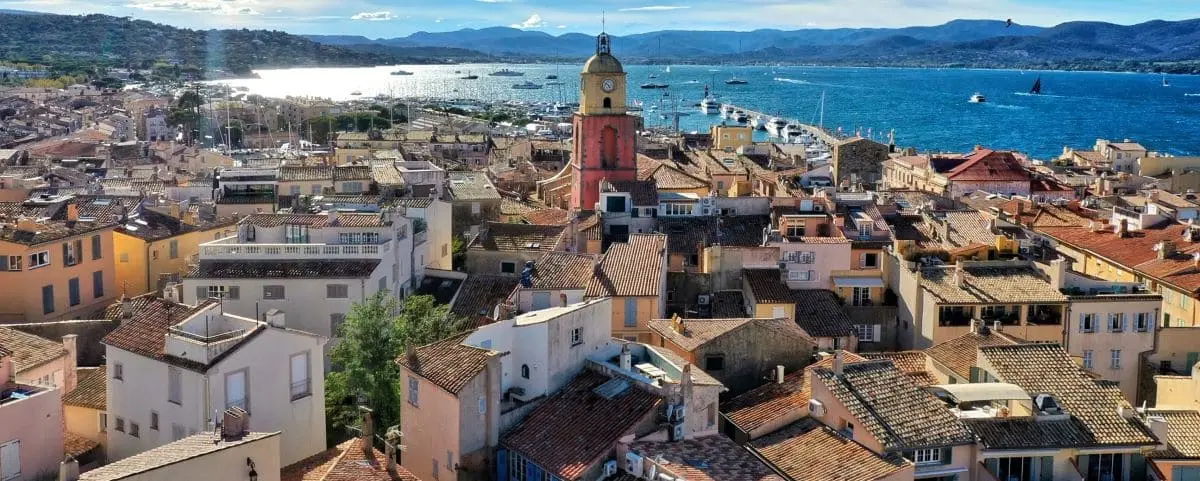
Appeal ✦✦✦✦✧
Population 4 000
Saint-Tropez, that legendary town on the coast, is the ultimate symbol of the glamorous, dream-like image of the Côte d’Azur. But beyond the flashy yachts and camera flashes, there’s a real charm hiding under the surface.
The town center, which still feels like a traditional village, has this irresistible vibe: narrow lanes, ochre and soft pink houses with pastel shutters, and little shaded squares where old fountains gently bubble. It’s the kind of place where time seems to slow down.
Of course, the port is the heart of it all. You’ll see everything from small traditional fishing boats to jaw-dropping yachts from around the world. It’s always buzzing, with people strolling by, artists showing off their work, and cafés where you’ll happily linger over a drink just watching it all go by.
Culturally, Saint-Tropez might surprise you. The Annonciade Museum, housed in a former chapel, has an impressive modern art collection, including works by Signac, Matisse, and Bonnard.
If you’re up for a bit of a climb, the Citadel offers a stunning view over the bay, and inside, there’s a maritime history museum worth checking out.
In the end, Saint-Tropez is a town of two faces: party hotspot and charming Provençal village. Its secret? It manages to be both a place to let loose and one to simply take in quietly.
Villefranche-sur-Mer

Appeal ✦✦✦✧✧
Population 5 000
Villefranche-sur-Mer is a tiny town, but its heart feels just like a village. Tucked between Nice and Saint-Jean-Cap-Ferrat, it has an incredible setting with its gently sloping old town, a harbor nestled in a dreamy bay, and the emerald green glow of Cap Ferrat on the horizon.
Its historic heart is centered around Rue du Poilu, and you’ll want to explore it slowly, through winding alleys, stepped squares and vaulted passages, including the famous Rue Obscure, an old underground defense tunnel. Along the way, you’ll come across the baroque Saint-Michel church, built in the 15th century.
Down by the Port de la Santé, with its tall red, ochre and golden façades, you get a real Italian vibe and an amazing view of the bay. It’s also where you’ll find the Saint-Pierre chapel, decorated by Jean Cocteau in the 1950s. The artist, who stayed at the nearby Welcome Hotel, left behind a powerful piece full of symbolism, mixing sacred and secular themes.
This Mediterranean gem is best enjoyed during the quieter hours, when the soft light plays on the buildings and the noise fades, giving way to the quiet elegance of the place. Villefranche is all about a certain art of living, where heritage, sea and poetry come together.
Vence
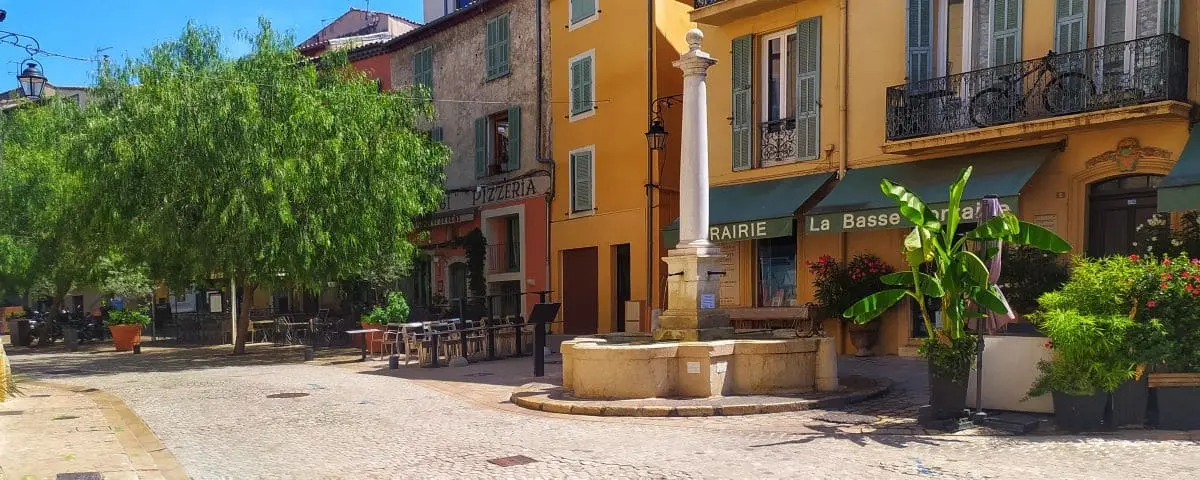
Appeal ✦✦✦✧✧
Population 20 000
Perched between the sea and the mountains, Vence is like a quiet gem in the hills of the French Riviera. It sits higher up, feels more down-to-earth, and is easier to get to than its neighbor Saint-Paul-de-Vence. It’s a real mix of Provençal charm, preserved heritage and stunning views. The air feels fresh here, and there’s this relaxed way of life that even some of the greatest artists came looking for.
The heart of Vence is still beating in its medieval old town, wrapped in its original city walls. You step in through Place du Peyra, with its cute little fountains, then wander around the narrow streets, colorful markets and lively squares. There’s a walking route through old Vence that takes you to Place Clemenceau, where you’ll find the cathedral with its baroque altarpieces and a mosaic by Chagall, then to Place du Frêne, with a former lord’s castle right there on the edge.
Since the 1920s, Vence has been a magnet for artists drawn to its light and peaceful vibe, like Chagall and Matisse, who moved there in 1943. Matisse created what he called his most personal work here: the Rosary Chapel, which he designed entirely, from the stained glass windows to the priest robes. He actually saw it as his life’s masterpiece.
But Vence isn’t just about art and old stones. It’s also the perfect base if you’re into exploring the amazing landscapes of the Préalpes d’Azur mountain range.
The town’s got a real local buzz too. Between the markets at the Grand-Jardin, the little restaurants, sunny café terraces and traditional festivals, there’s always something going on. People live here year-round, and you’ll run into hikers, art lovers and bookworms all in the same day.
Fréjus
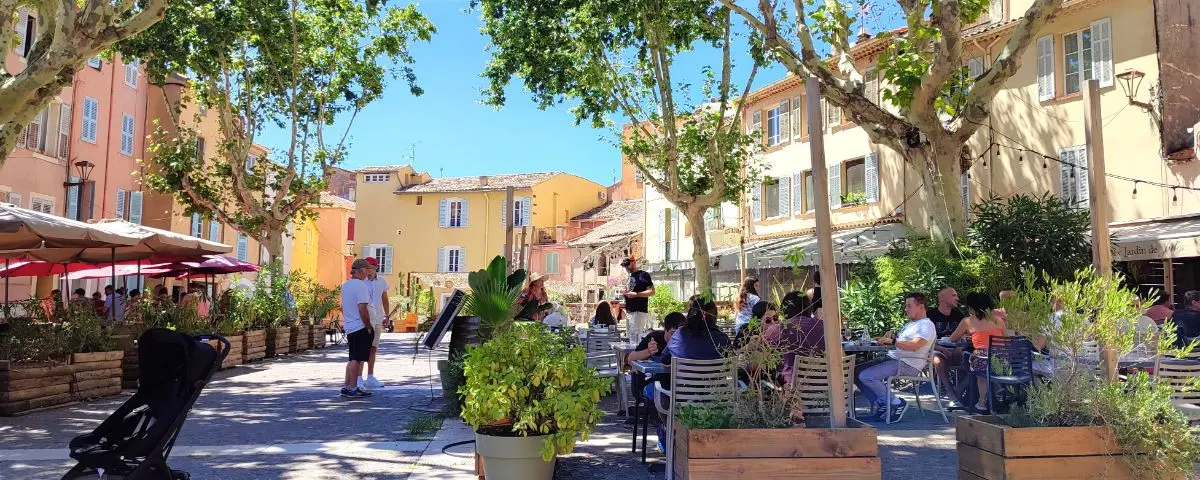
Appeal ✦✦✦✧✧
Population 60 000
Between the sea and ancient ruins, Fréjus has this double personality: part modern beach town, part city of art and history with deep Roman roots. It’s all mixed in with its neighbor Saint-Raphaël, but Fréjus feels a bit more southern in vibe, and it’s got some pretty amazing architecture to show off.
Founded by Julius Caesar, Fréjus used to be one of the biggest Roman ports in the Mediterranean. Augustus turned it into a naval base, and you can still see the remains from that time all over the place: there’s an amphitheater, an aqueduct, the Gaul Gate, a theater, Roman baths, etc.
The old town of Fréjus sits on a little hill and is totally worth checking out. You’ve got fancy old facades, carved doorways, pedestrian streets lined with market stalls, and small shaded squares. One of the highlights is the episcopal complex: Saint-Léonce Cathedral, the cloister, and the baptistery, a mix of Romanesque, Provençal Gothic, and medieval frescoes.
Fréjus also has its feet in the water. Fréjus-Plage is a newer part of town, great if you’re just looking to chill by the sea. Port-Fréjus is more lively, with waterfront restaurants and a summer night market that brings in the crowds. And if you want something quieter, head over to Saint-Aygulf, it’s got little coves, wild coastline and the Villepey ponds, a protected natural area that’s perfect for birdwatching.
There’s always something going on too, concerts in the amphitheater, firework festivals, hikes up to Mont Vinaigre, canoe trips down the Argens River with a view of the Rocher de Roquebrune.
Fréjus hits that sweet spot between ancient history, cultural energy and seaside chill.
Hyères
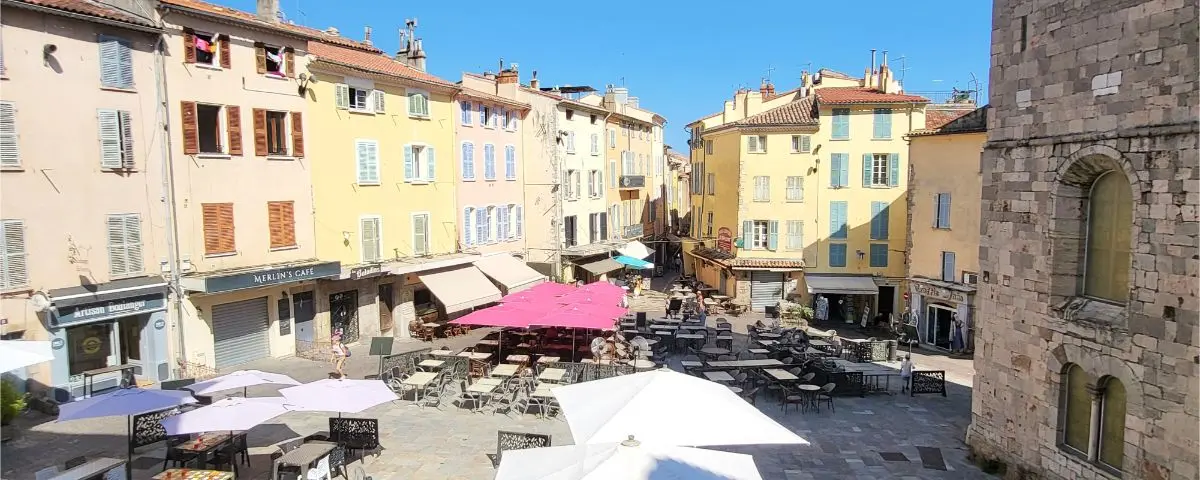
Appeal ✦✦✦✧✧
Population 55 000
This early beach town on the French Riviera really has it all: a soft climate, historical elegance and loads of natural beauty. Hyères is known as a city of art and history, and it was actually one of the very first holiday destinations in France. Kind of a tourism lab before tourism was even a thing. And even now, people love it for its heritage, coastline and those iconic islands just offshore.
Hyères has over two thousand years of history behind it. From the old Greek colony of Olbia to the medieval ruins up on the hill, the past is everywhere, you just have to wander around to see it. The old town is full of narrow little streets and feudal remains, with the ruins of a dismantled castle watching over everything. All around the town, remain these 19th and 20th century villas, leftovers from the golden age when Europe’s elite came here to soak up the sun and heal in the mild coastal climate.
Culturally, Hyères has serious style too. Villa Noailles, built in the 1920s, is a modernist gem and a big name in the contemporary art world. It hosts major festivals every year, like Design Parade, the international fashion and photography festival, and the Midi Festival. Events like these really give the city its bold, artistic identity.
And if you’re into nature, Hyères has plenty to offer: around 20 kilometers of beaches, big salt flats and a stunning coastline. The peninsula, connected by this rare double sandbar, has some amazing long beaches, like La Badine and Almanarre, which is a top spot for kitesurfing.
Sanary-sur-Mer
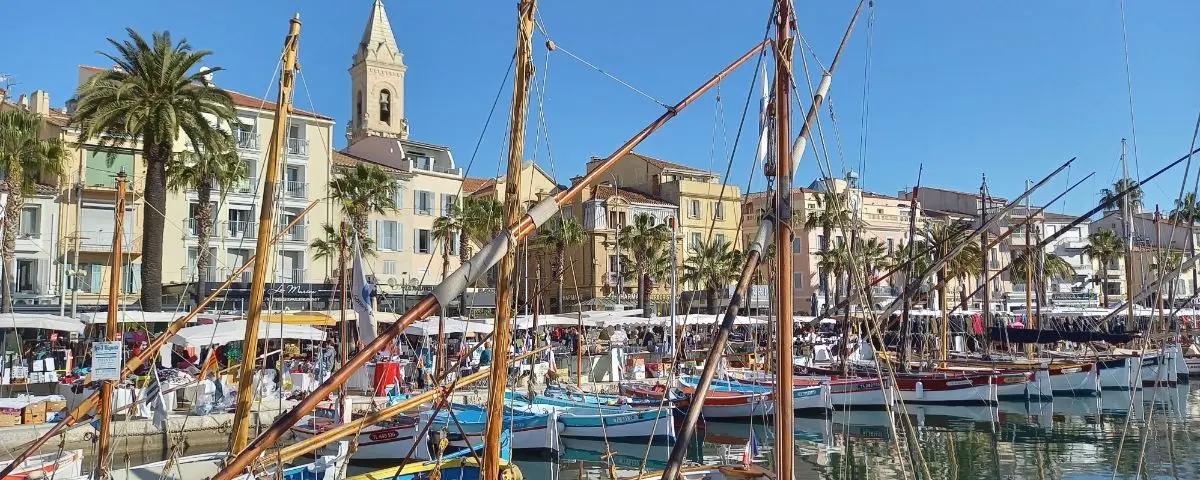
Appeal ✦✦✦✧✧
Population 18 000
Blending Mediterranean tradition with a rich intellectual past, Sanary-sur-Mer really stands out as something special along the Var coast. In summer, it’s a lively family-friendly beach town, but outside the high season, it settles back into its true self, a charming little fishing port, with palm-lined quays, traditional cute old wooden, and sails gently swaying on the water.
The maritime heritage here is still very much alive. You’ve got the Frédéric Dumas Museum, named after one of the pioneers of scuba diving. Set inside Sanary’s medieval tower, it tells the story of the “Mousquemers,” who explored the underwater world alongside Cousteau and Tailliez. The museum’s packed with vintage diving gear and underwater archaeology finds.
One of the local highlights is the Wednesday morning market, one of the biggest in the region, with nearly 300 vendors. It’s a full-on Provençal experience, with colors, smells and flavors that’ll draw you right in.
Life in Sanary flows with the sea. You can go on boat trips, follow coastal hiking paths, find hidden coves, dive with clubs or even join nature outings. And if you’re into the underwater world, all you need is a mask and snorkel to discover marine life just off the beaches.
At the crossroads of culture, history and coastline, Sanary-sur-Mer offers a more thoughtful kind of French Riviera.
